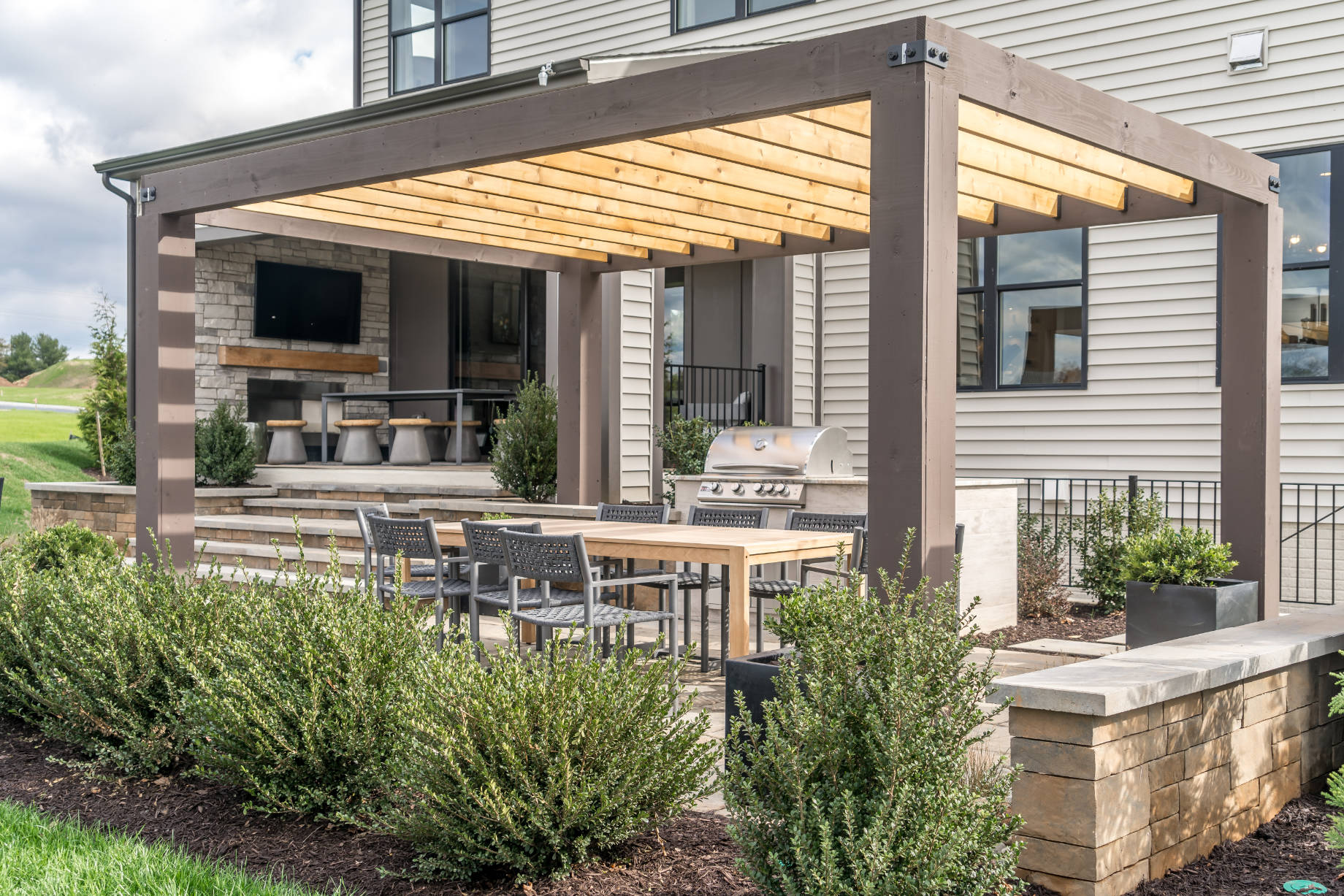
Creating a comfortable outdoor relaxation zone requires a thoughtful balance between shade and airflow. Proper shade provides relief from harsh sunlight, while maintaining airflow ensures the space remains cool and inviting even on warm days.
This balance is essential for anyone aiming to spend extended periods outdoors without feeling stifled or overheated. Materials, positioning, and the overall design play key roles in achieving a space that feels both private and breezy. Whether designing a small patio or a spacious deck, strategic choices can transform a basic outdoor area into a haven of comfort.
Strategic Placement of Shade Structures
Permanent shade structures, such as pergolas and open-roof canopies, create a framework that enhances both aesthetics and functionality. The key lies in placement and orientation. Structures positioned to block the sun’s highest and hottest angles—typically in the afternoon—provide maximum comfort. Louvered or slatted roofs allow partial sunlight and airflow, creating a dappled light effect that feels natural and inviting.
When using vines or climbing plants over these structures, choosing species with spaced foliage allows breezes to filter through instead of creating a solid, heat-trapping barrier.
Enhancing Comfort with Outdoor Curtains
Curtains are among the most versatile solutions for improving shade and airflow in outdoor areas. Lightweight fabrics allow natural breezes to circulate while blocking direct sunlight when needed.
Their adjustable nature means they can be drawn fully, partially, or tied back, depending on the time of day and desired level of privacy. Choosing breathable materials prevents the space from feeling stuffy, and light-colored fabrics reflect heat rather than absorbing it.
For spaces requiring more adaptability, outdoor porch roll up curtains offer a convenient way to regulate sunlight exposure without obstructing airflow. They can be rolled up for maximum ventilation or lowered to block intense rays, making them ideal for varying weather conditions.
Layering Natural Elements for Cooling
Natural greenery can significantly influence temperature and airflow. Tall plants, hedges, and shrubs placed around the perimeter of a relaxation zone provide natural shading while allowing air to flow through the gaps. Unlike solid walls, plants do not create stagnant air pockets, which keeps the area feeling fresher.
Deciduous trees are particularly effective because their leaves provide dense shade during warm months while allowing sunlight through when they shed in cooler seasons. Grouping plants strategically, rather than densely crowding them, encourages cross-ventilation and prevents moisture buildup.
Utilizing Adjustable Awnings for Flexibility
Adjustable awnings offer an excellent way to control shade intensity throughout the day. Retractable designs allow the space to adapt to changing sun positions, offering full coverage during midday and partial coverage during cooler hours. Installing awnings at angles that encourage airflow beneath them ensures they do not trap heat. Breathable fabrics or mesh-like materials are preferable because they allow hot air to escape instead of accumulating underneath.
Optimizing Furniture Layout for Airflow
The arrangement of outdoor furniture has a direct impact on comfort. Placing seating areas where breezes naturally flow enhances the cooling effect without requiring additional equipment. Avoid clustering furniture too tightly, as this blocks airflow and creates stagnant warm zones. Using lightweight, movable furniture allows quick rearrangement to adapt to wind direction or sun angle changes.
Incorporating Water Features for Natural Cooling
Water features can significantly improve the perceived temperature of an outdoor area. Small fountains, cascading walls, or even simple bowls of water introduce evaporative cooling, which lowers surrounding air temperatures slightly. Moving water also helps keep the air feeling fresher by reducing dryness, making long periods of relaxation more comfortable.
Balancing Privacy and Ventilation
Achieving shade and airflow often involves compromising on privacy, but clever design can ensure both coexist. Lattice screens or slatted panels placed at angles block direct views while allowing breezes to pass through. Using a combination of tall plants and open-weave partitions provides additional privacy without restricting ventilation. Choosing materials that are breathable and not entirely solid ensures the area does not become stuffy, maintaining an open yet secluded feel.
Choosing Materials That Promote Airflow
Every element in an outdoor relaxation zone should contribute to ventilation rather than hinder it. Dense, solid surfaces trap heat, while breathable materials maintain airflow. Fabrics, wicker, and mesh are ideal for furniture and shading elements because they encourage air movement.
Creating Multi-Level Shading
Layering shade at different heights creates a dynamic cooling effect. Combining overhead structures with mid-level shading, such as tall potted plants or screens, distributes sunlight, filtering it more evenly. This prevents overly dark, enclosed areas while maintaining comfort.
Encouraging Natural Cross-Ventilation
The most effective way to maximize airflow is through natural cross-ventilation. Designing open pathways for wind to enter and exit keeps air circulating, preventing heat buildup. Avoid placing solid barriers on opposite sides of the relaxation zone; instead, leave at least two sides partially open or fitted with breathable panels. When combined with strategic placement of shade elements, this airflow creates a refreshing, naturally cooled space even during warm weather.
A carefully designed outdoor relaxation zone can provide year-round comfort when shade and airflow are balanced effectively. The right mix of breathable materials, adaptable shading options, and thoughtful furniture placement transforms a basic patio or deck into a pleasant retreat.